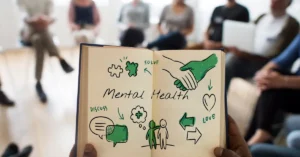Opioid addiction is a chronic disease that affects millions of people worldwide. While relapse rates remain high, research shows there are several factors that can significantly improve an opioid addict’s chances of achieving long-term recovery.
ⓘ Disclaimer: The following article is the research work of one of the authors of LAFFAZ for knowledge purposes only. Always consult your doctor or healthcare provider in the first place.
Access to Medication-Assisted Treatment
Medication assisted therapy involves prescribing medications like methadone, buprenorphine, or naltrexone alongside counseling and behavioral therapies. MAT helps normalize brain chemistry, block the euphoric effects of opioids, relieve physiological cravings, and significantly reduce the risk of overdose. Studies show MAT helps sustain recovery by decreasing opioid use, increasing retention in treatment programs, and improving survival rates. Expanding access to these evidence-based medications is crucial for improving recovery outcomes.
Participation in Support Groups
Peer support groups like Narcotics Anonymous (NA) provide social, emotional, and informational support needed for recovering addicts to navigate high-risk situations. Through shared understanding and by learning from the experience of those further along in recovery, members gain hope and feel less alone. Attendance at regular support group meetings has been shown to decrease drug use and improve abstinence rates. An analysis of NA membership found that longer retention and more frequent meeting attendance correlated with a higher likelihood of recovery.
Developing Coping and Relapse Prevention Skills
Cognitive behavioral therapy (CBT) teaches addicts coping strategies to better manage cravings, high-risk situations, and the thoughts and feelings that may lead to relapse. CBT helps identify personal triggers and develop alternative behaviors when cravings arise. Relapse prevention programs take it a step further, guiding addicts to create detailed plans for avoiding or escaping triggers and to make lifestyle changes that support recovery. Mastering such skills significantly improves an addict’s self-efficacy and resilience.
Having a Strong Support System
Family members and friends play an important role in motivating addicted loved ones to enter treatment and providing much-needed emotional support during recovery. However, these relationships often become strained during active addiction. Mending damaged relationships and developing positive social connections is key. Counseling family members helps them learn how to constructively assist their loved one’s recovery rather than enable addiction. Research confirms that having an extensive recovery-oriented social network leads to better recovery outcomes.
Transitioning to a Sober Living Environment
Since familiar people and places are often triggers, entering a sober living home after residential treatment can help prevent relapse during the vulnerable transition to normal life. Sober homes provide a safe, drug-free environment, peer support, and accountability. Residents are required to pass random drug tests and comply with a structured routine. Studies show that those who participate in sober living after treatment have higher abstinence rates, better employment outcomes, and less criminal justice involvement.
Challenges for Opioid Addicts
Some of the most common challenges faced by opioid addicts include:
- Cravings
- High Risk of Relapse
- Withdrawals
- Co-Occurring Disorders
- Stigma
- Unemployment & Financial Problems
While opioid addiction is a formidable foe, implementing these evidence-based strategies gives those suffering the best chance at achieving long-term recovery. More funding and resources directed towards improving access and removing barriers will help raise recovery rates on a broader scale.
ⓘ As part of our ongoing support for startups and SMEs, LAFFAZ Media publishes feature and resource articles that may include references and links to external websites. These inclusions are selected at our editorial discretion to provide valuable information or suggestions to our readers. LAFFAZ Media does not control, endorse, or assume responsibility for the content or practices of external websites. For more details, please refer to our Terms and Conditions.





